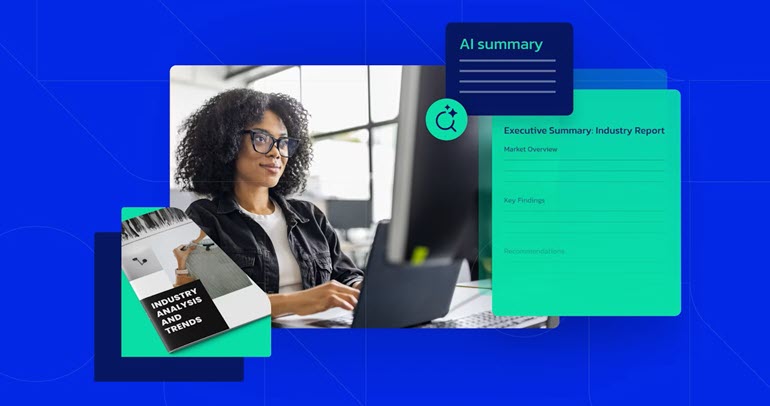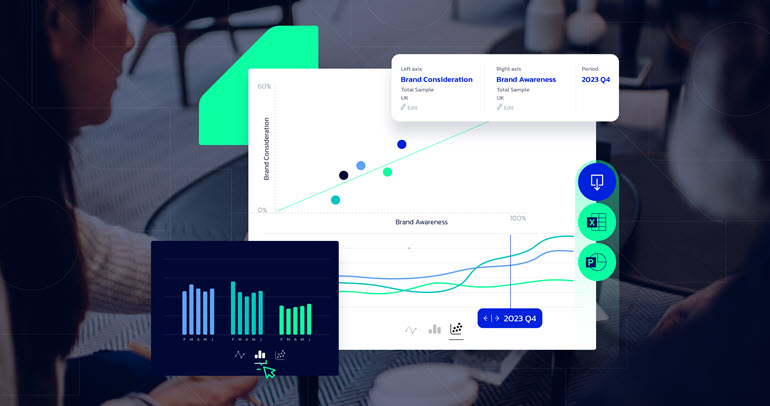
In recent years, technology has played a critical role in shaping accessible experiences. From text-to-speech software to video captioning to earbuds with hearing assistance, innovations that once seemed groundbreaking have become commonplace. Today, AI is being widely considered as a tool to support accessibility, and there’s a lot of excitement around its potential.
But deciding to implement AI for accessibility brings challenges that need to be addressed. Businesses must consider the right tools and strategies alongside the individuals who use them—and steer clear of a one-size-fits-all solution.
In market research, organizations like Escalent are helping people better understand AI’s potential for accessibility. Our team of technology experts provides options and support for researchers, clients, and participants on how to make research more inclusive with AI. Check out our perspective below.
AI’s Role in Accessibility Today
For years, AI has supported accessibility tools in ways that generally go unnoticed—like speech recognition software that helps people dictate notes or emails, or audio descriptions for visually impaired users. However, these tools have often been rudimentary and not widely available.
But as AI tools and their use cases proliferate, their value for supporting accessibility is being looked at with a new lens, and this is shifting the toolsets and techniques used in AI-powered market research, too. AI isn’t just helping researchers analyze data, it is also helping them make sure participants with different needs can access surveys and studies more easily.
Some accessible AI use cases weren’t even specifically designed with accessibility in mind, but users with accessibility needs are discovering new ways to use already existing tools. An example is when GIPHY partnered with Scribely, a digital accessibility tool, to auto generate alt-text captions for over ten thousand videos, memes, and gifs. Or, when Netflix used AI technology to create adjustable subtitles so users can customize their experience to their visual needs. These kinds of actions help democratize AI for all.
But new research and development is focusing on how assistive AI can be intentionally designed for accessibility with tools like Accessibly, which uses AI to power screen readers and keyboard navigation in a way that is fluid and easy to use. Other tools, like Stark, are integrating into entire tech stacks to help companies comply with accessibility requirements across their entire workflows.
The Benefits of AI for Accessibility
AI can be a beneficial choice for accessibility because of its adaptability and flexibility—it can be both personal and scalable, which not all accessibility tools can be. For example, a guide dog is personal but not scalable.
AI tools also tend to be more affordable than traditional accessibility solutions. With things like speech-to-text or screen readers, more people can get access to these services. Plus, AI allows people with disabilities to use the same tools as their peers, making school and work environments more inclusive. This benefits not just individuals, but also organizations adopting these tools since it limits the required investment.
The Drawbacks of AI for Accessibility
Not every AI tool works for everyone, however. And this could create a new kind of digital divide, where some are supported by AI and others are not.
AI isn’t perfect. It can sometimes “hallucinate” or give incorrect information, which could be dangerous or confusing when it comes to accessibility. And with the latest generative AI models being relatively new and untested, they often don’t perform consistently. Many tools which claim to format documents to comply with accessibility guidelines are inconsistent at best, and those relying only on these tools may experience large gaps.
Finally, developers of AI tools need to make sure they are listening to the people who actually need accessibility tools, not just focusing on building the tech itself. AI tools, especially for accessibility, need to empower users through transparency. Users should know what kind of AI they are using, and what data is being stored—especially when handling sensitive health information. Without understanding and listening to the community one is trying to help, the tools might miss the mark.
AI Research and Innovation with Purpose
As AI technology continues to develop, we must move with care—ensuring that AI tools are as inclusive, equitable, and reliable as they can be.
At Escalent, we are dedicated to leveraging innovative AI technology strategies to provide top-tier market research solutions that enhance accessibility and deliver actionable insights. Whether you are interested in AI-enabled quantitative surveys, advanced data visualization, or real-time transcription and translation services, we can tailor solutions to meet your specific needs—and the needs of your users and customers. Contact us today to discover how we can elevate your AI research capabilities and ensure that every voice is heard.
Want to learn more? Let’s connect.








